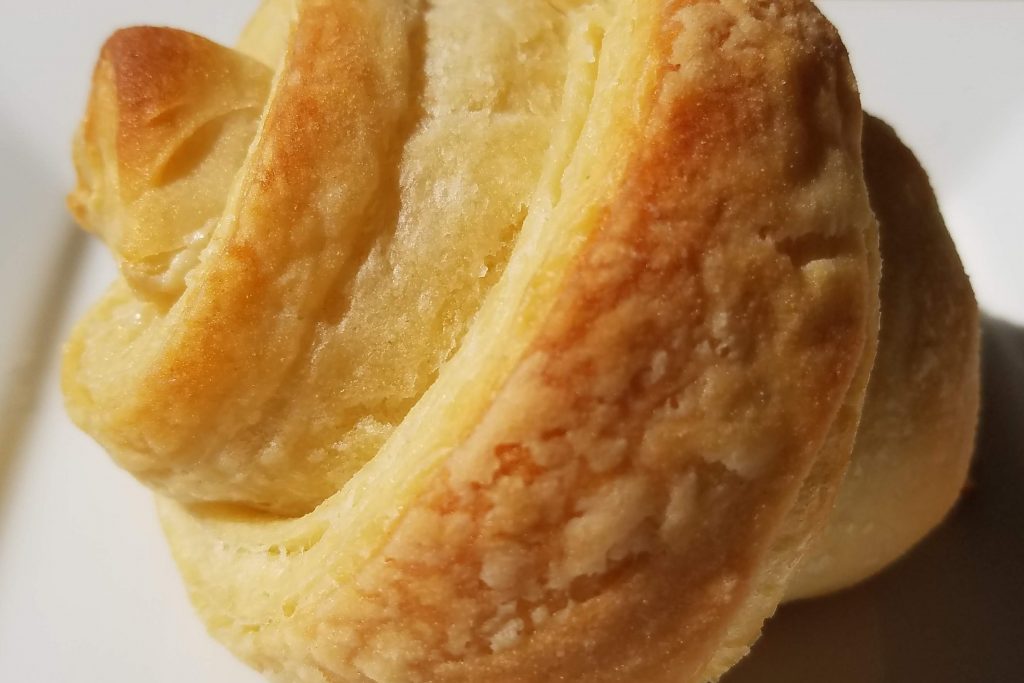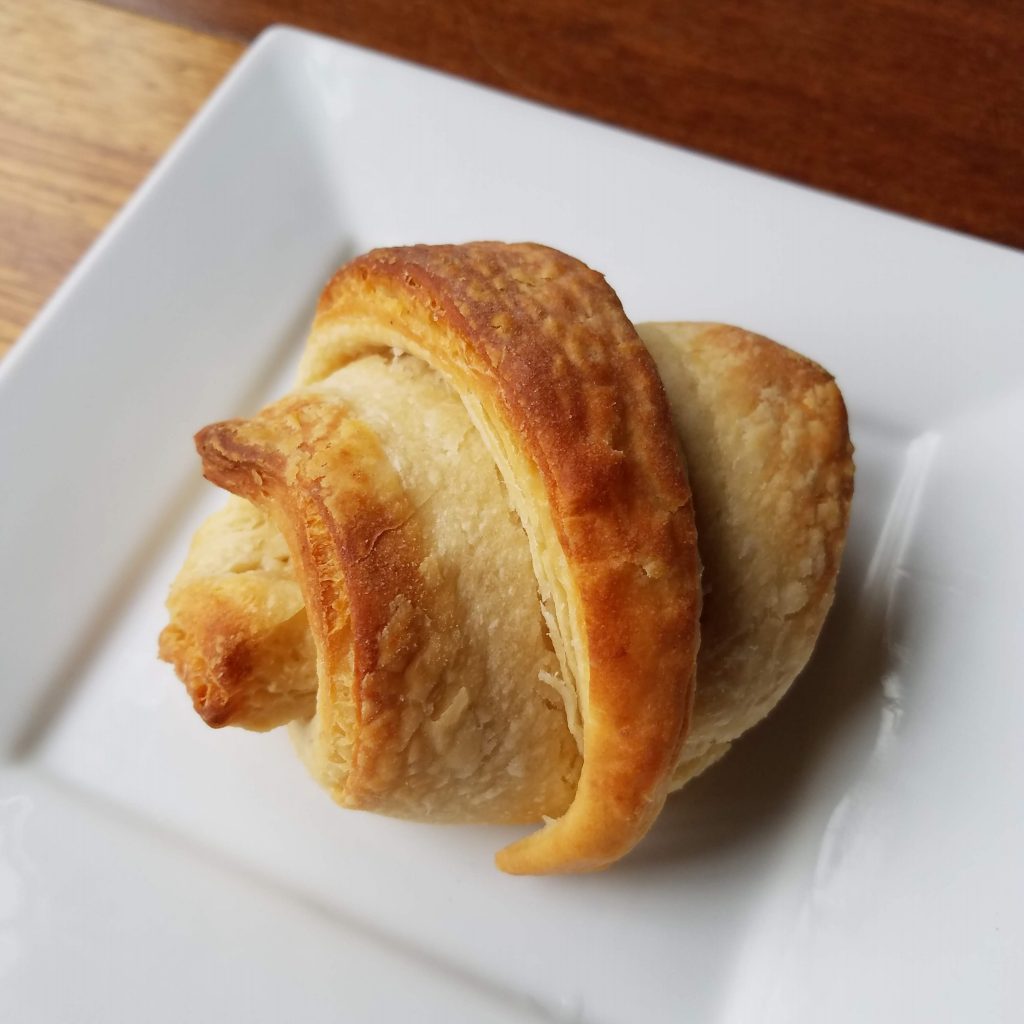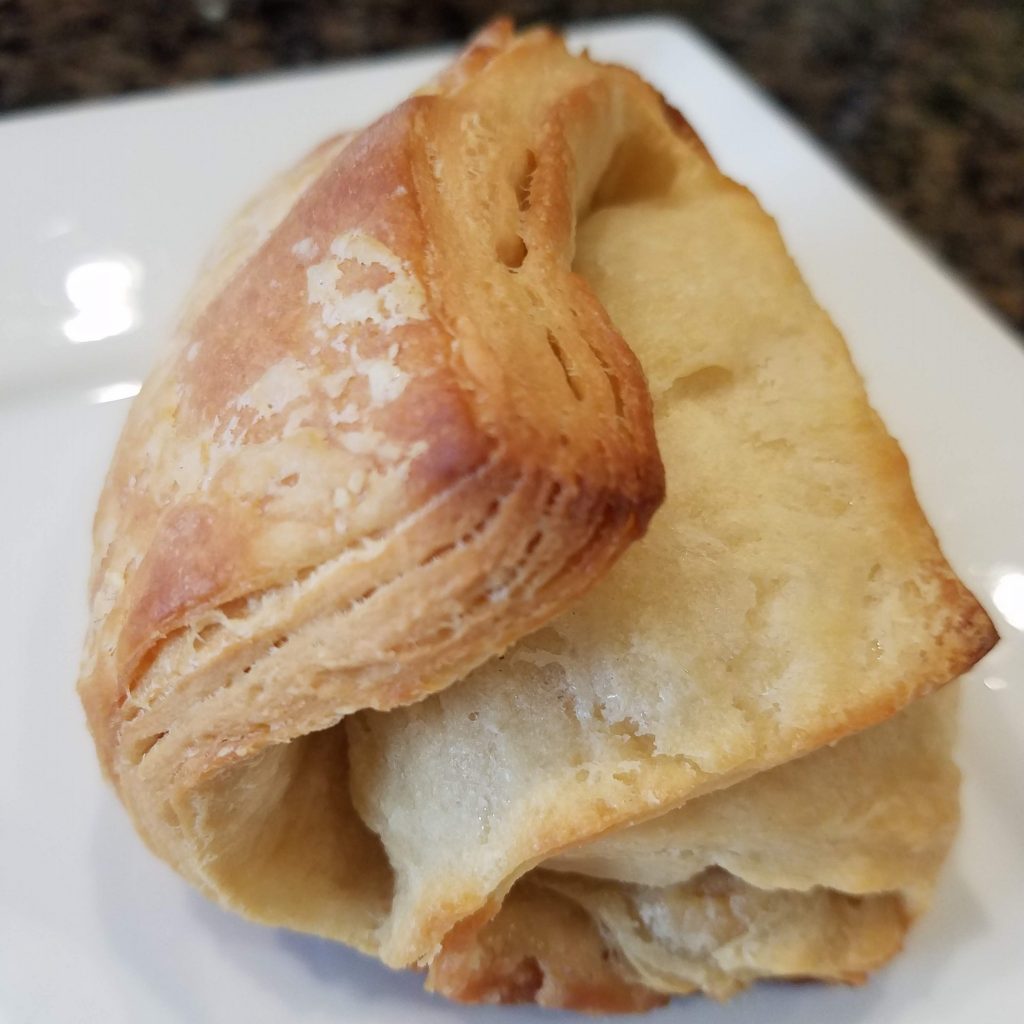Cream Cheese-Filled Croissant Recipe
A homemade croissant recipe you can adapt to fit your culinary peculiarities. This iteration has a quick cream cheese filling that keeps these croissants on the savory-sweet side of breakfast pastries.

Crossiant Recipe with Cream Cheese Filling
Ingredients
Croissant
- 1 ½ cups milk (warm, 100°F)
- 1 ¼ tbsp active dry yeast
- ¼ cup packed light brown sugar
- 3 to 4 cups flour
- 2 tsp salt
- ¾ cup butter (room temperature)
Filling
- 2 to 3 oz cream cheese
- ⅓ cup powdered sugar
- 1 tsp vanilla
- 1 tbsp sugar
Instructions
- Heat milk to warm, not scalding to just about 100°F (microwave 30 seconds to 1 minute)
- Mix milk, yeast and sugar in a large mixing bowl and let rest 5-10 minutes (foam should form, if not, start over)
- Add 3 cups of flour and salt to the bowl and mix until combined, adding flour as needed to reach a dough that is not sticky
- Flour a flat work surface and knead dough until smooth, 5-10 minutes
- Shape into a rectangle that is about ½ to 1 inch in height; this may require a rolling pin
- Cover or seal (I place mine in a gallon bag) and place in the refrigerator for 1 to 2 hours, while allowing butter to come to room temperature
- Cut butter into 1 cm thick slices, along the length of the stick to make rectangular slices
- Remove dough and place on floured surface, with the short edge facing you
- Lay butter in the center third of the dough, overlapping rectangles slightly
- Fold the dough like an envelope, pulling the sides to the center, and then folding the top and bottom so that they overlap at least by half
- Use the rolling pin to seal and flatten your envelope, trying to roll the dough back into a rectangle
- Repeat envelope fold and flatten process 3 to 4 times
- Refrigerate overnight using the same method as earlier to seal the moisture in the dough
8-10 Hours Later, or the Next Day
- Pull out dough
- Warm the cream cheese in a microwave safe bowl (30 seconds) and add in the remaining filling ingredients, combining until smooth
- Roll dough out into a thin rectangle of a desirable thickness (thicker dough will mean a less stepped croissant, while a thinner dough can be rolled more when shaping, but will puff up less)
- Cut in square or triangle shapes (squares are easy, triangles require more planning but allow you to achieve the typical gradated roll up
- Place filling at the base of the croissant shape (where the inside will be, the base of the triangle or the side of the square you want to surround the filling
- Roll dough around the filling, tucking in the edges at the base
- Place on baking sheet
- Let rise for 1 to 2 hours; croissants will grow 1.5 to 2 times in size
Oven
- Preheat oven to 425°F
- Spray oven door with water and add in croissants
- Lower temperature to 400°F and do not disturb the oven for 8 minutes
- Rotate pan
- Lower the temperature to 375°F and until the croissants begin to golden (about 8 min)


(therefore technically not a croissant)
Homemade Croissants – Notes and Tweaks
This homemade croissant recipe minimizes the quantity of butter needed to form the layers in the lamination process. More butter doesn’t always make things better, but that it a call for the baker. Experiment with the quantity of butter to find the amount that’s right for your croissant application.
Adding additional sugars or salt are quick tweaks to this recipe that nudge it towards a confectionery delight or a savory treat. These can be filled with a variety of things, from the sweetened cream cheese included here, to combinations of ham and cheese, chocolate, or jams.
While more time-consuming in preparation than its canned counterpart, homemade croissant dough is flexible in its scale. Stretch the dough thin for a tight spiral, or keep it thick, to let the dough-butter layers take center stage. Deign to make giant croissants or tiny croissants. As a bonus, almost anything you can make with canned croissant dough, you can make with this dough. Only, it’ll be without the weird aftertaste. Mastering this dough opens you up to the world of puff pastries.
The Crescent Roll
Croissants are poplar breakfast items around the world, with a focused number of variants in styles and fillings in Europe and the Americas. Croissants are viennoiseries, leavened baked goods of Austrian origin. Often made with a laminated dough, they contain enough non-flour ingredients to be aligned with pastries rather than breads. Croissants are named and known for their crescent shape, which led to the Americanized moniker for the pastry – the crescent roll.
Lamination is an interesting process. It’s what puffs a puff pastry and generally brings visual and mouthfeel interest to many baked goods. Lamination is the creation of a layered dough made by repeatedly rolling and folding a solid fat between layers of dough. Baker’s Journal has a quick overview of the math behind lamination techniques and how the folds can affect the final baked good.
